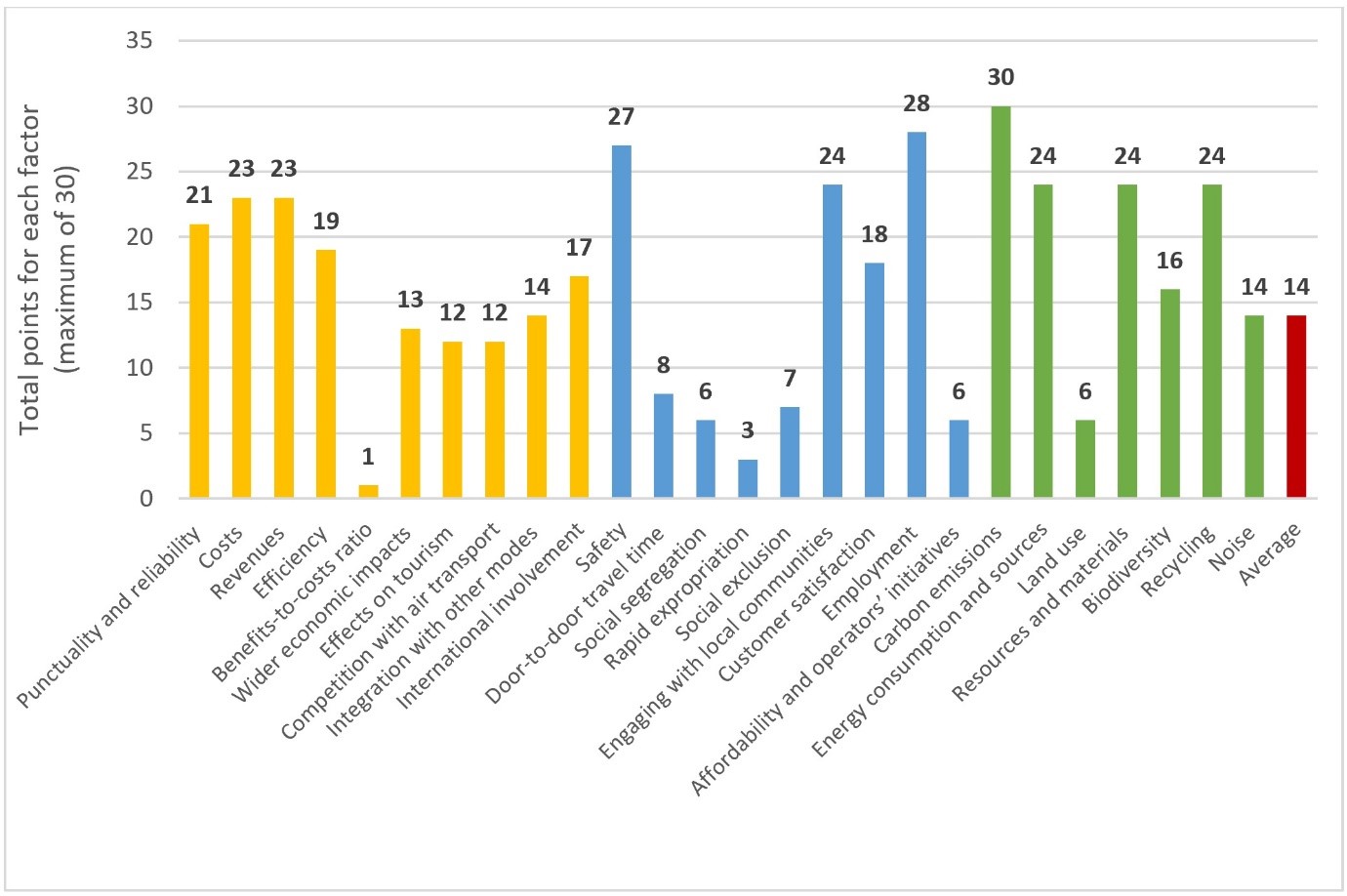
Dr Labib Azzouz talks about sustainability reporting in the field of high-speed railways and the related research at BCRRE.
High-speed railways (HSRs) are often bracketed with sustainability in the transportation literature; they are capable of meeting many individuals’ and societies’ mobility needs in a safe, clean, reliable, efficient, and environmental-friendly manner (Leboeuf, 2018). Sustainability reporting varies among different companies for different reasons (Del Mar Alonso Almeida et al., 2014). Equally, HSR operators hold different opinions and views on sustainability, and these are typically expressed in their sustainability reports and publications.
There is no unified reporting framework that combines HSR topics, issues, and challenges under the three pillars of sustainability. In the aim to reach such a framework, influenced by ‘‘What is Well Measured is Well Managed’’, the ‘‘Benchmarking International High-Speed Railways from the Sustainability Perspective’’ research project was conducted. The project was led by Professor Anson Jack and Labib Azzouz of BCRRE.
First, we formulated a 26-factor sustainability reporting and benchmarking framework. The 26 factors comprise key economic, social, and environmental topics, challenges, and issues that govern the sustainability performance of HSRs. They were carefully selected after thoroughly exploring the most recent literature and after consulting experts from the International Union of Railways (UIC). Then, we examined the availability of the selected factors in HSR companies’ sustainability reports and publications. The search process considered publications of 10 HSR companies that are collectively responsible for operating and managing almost half the HSR activity around the world. Scoring criteria were developed and implemented, and each factor was assigned a score to measure how well it was covered in companies’ reports (Azzouz and Jack, 2020).
The search process revealed significant reporting variations at different levels. At the sustainability pillars level, the environmental pillar had the strongest presence in sustainability reports, followed by the economic pillar, while the social pillar had relatively the weakest representation. At the factors level, emissions, energy consumption, costs, revenues, safety, and employment dominated the scene, while factors like biodiversity, customer satisfaction, efficiency, and competition with air transport had a moderate presence. Most importantly, factors such as land use, affordability, social exclusion, and benefits-to-costs ratio were rarely covered. Finally, at companies level, some operators showed a better reporting performance than others (Azzouz and Jack, 2020).

The search process showed that there are opportunities to improve sustainability reporting practices at all levels. Even for factors with good reporting scores, the exact nature of reporting often varies among operators, and there is a need for standardisation and normalisation. Also, operators with good reporting performance failed to cover some sustainability factors and hence, they can improve their disclosure by considering these factors in their future reports. Operators with weak reporting performance can adopt the 26-factor reporting framework to revolutionise their sustainability disclosure. To enhance the reporting on poorly covered factors, there is a need to develop brand-new quantitative and qualitative indicators, and international organisations like the UIC and the Global Reporting Initiative (GRI) could play an important role in this regard.
The 26-factor framework could serve several purposes. It could act as a ready-to-use sustainability reporting template through which HSR operators can improve their sustainability disclosure. Equally, HSR operators could employ the framework as a tool to track and manage their sustainability performance. Also, it offers a minimum level of standardisation that is required for facilitating potential benchmarking exercises. Another use of the framework is to update publications and reporting guidelines of international organisations like the UIC and the GRI. At the same time, the framework could be used to boost the publicity – and evaluation – of new HSR projects. Finally, the framework features a reasonable balance between the three sustainability pillars and underpins several of the United Nations’ sustainable development goals (SDGs).
For further information, please contact lxa513@student.bham.ac.uk or labibazzouz@hotmail.com
BCRRE will be running the event ‘High Speed Rail: Education Interchange’ in December 2020, for more information, please visit the website.
- AZZOUZ, L. & JACK, A. 2020. Benchmarking the sustainability reporting of high-speed railways (HSRs): Towards a state-of-the-art benchmarking and reporting framework for HSRs. Journal of Cleaner Production, 250, 119505.
- DEL MAR ALONSO ALMEIDA, M., LLACH, J. & MARIMON, F. 2014. A closer look at the ‘Global Reporting Initiative’sustainability reporting as a tool to implement environmental and social policies: A worldwide sector analysis. Corporate Social Responsibility and Environmental Management, 21, 318-335.
- LEBOEUF, M. 2018. High-speed rail-Fast track to sustainable mobility. Paris: International Union of Railways.

Thanks for sharing such an informative blog